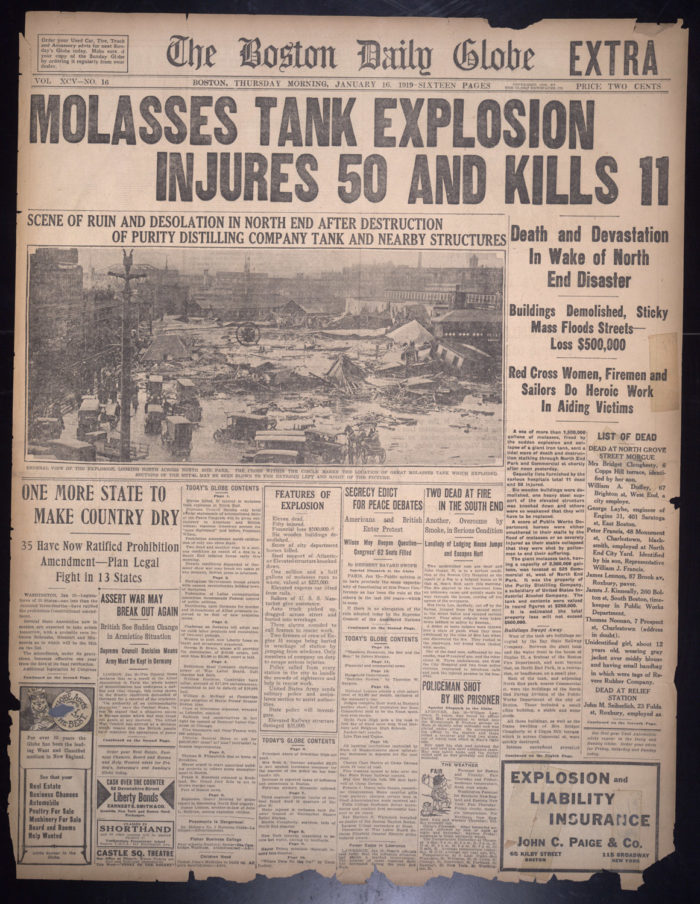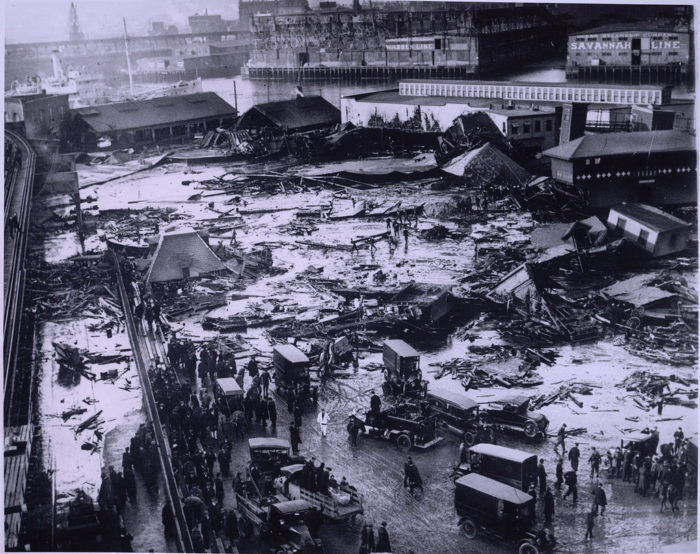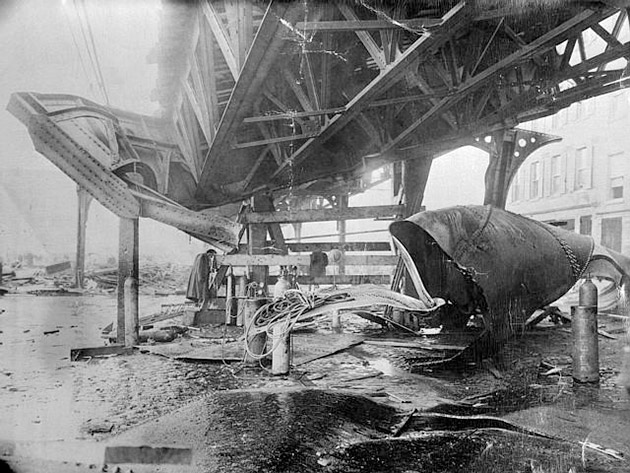This Bizarre And Devastating Massachusetts Disaster Was Unlike Any Other In History
This will be the weirdest thing you read all day. I promise. Ready?
In 1919, a massive wave of boiling molasses devastated the city of Boston.
I told you. This might be the most bizarre disaster to occur in the history of the United States. There’s something about the thought of a massive molasses tsunami that makes you scratch your head a bit. Because molasses is super slow, right?
So wrong.
On January 16, 1919, a molasses storage tank burst in Boston’s North End. Over 2.3 million gallons of hot molasses surged forth in a massive 25-foot high, 160-foot wide wave that roared through the streets at a rate of 35mph. The wave absolutely obliterated everything in its path. People were lifted off the ground and swept along in the deadly tide of sweet stuff, and the thousands of rivets that popped off the tank whizzed like bullets through the North End.
An estimated 21 people were killed on Commercial Street alone. The total death toll from the disaster is thought to be over 50 citizens, with over 150 people sustaining serious injuries. Perhaps the most heart-rending tales from the disaster center around small children walking home from school, many of whom were not tall nor strong enough to extricate themselves from the sticky morass.
The Boston Post wrote of the disaster:
“Molasses, waist deep, covered the street and swirled and bubbled about the wreckage… Here and there struggled a form—whether it was animal or human being was impossible to tell. Only an upheaval, a thrashing about in the sticky mass, showed where any life was… Horses died like so many flies on sticky fly-paper. The more they struggled, the deeper in the mess they were ensnared. Human beings—men and women—suffered likewise.”
Property damages were almost unfathomable. Buildings were pulled from their foundations while utility poles and street lights were bent in half and twisted into bizarre shapes. Horses and other animals slowly drowned in the brown syrup. The steel girders of the Boston Elevated Railway were snapped like pretzel rods by the powerful wave, and trains were nearly swept clear off their tracks. It is estimated that the damages totaled over $100 million in today’s money.
116 cadets from the USS Nantucket, which was docked nearby, were first to respond to the crisis. Rescuers waded into the flood in an effort to located survivors, but many of the victims were so covered in molasses that it was difficult to tell the dead from the living.
The cleanup effort lasted for weeks, and many reported that the stickiness had spread throughout the city. Rescuers and citizens apparently tracked the molasses through the streets, into subway stations, onto public phone handsets, and even into homes. Boston Harbor was brown with molasses until the summer season. Even years afterward, some North End residents claimed that the neighborhood smelled slightly sweet on hot days.
Molasses. Sugary, sticky, and apparently deadly. Did your grandparents or great-grandparents have any memories of this disaster? Let us know!
OnlyInYourState may earn compensation through affiliate links in this article. As an Amazon Associate, we earn from qualifying purchases.





